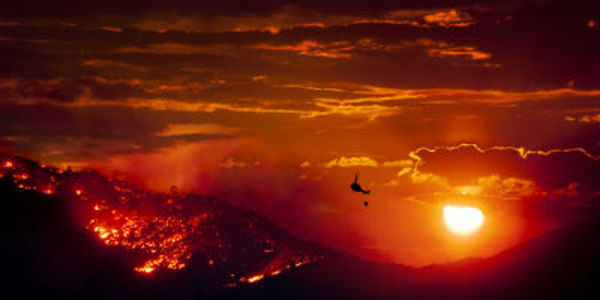This summer we have witnessed catastrophic flooding in Louisiana, raging wildfires in California, and the rapid spread of the Zika virus. These frightening events should remind us about the importance of emergency preparedness. For those of us in the field of aging, these emergencies obligate us to remind everyone about their often outsized effects on older adults and the extra preparations needed for the safety of our aging population.
With the floods in Louisiana, the worst natural disaster to hit the U.S. since Hurricane Sandy, the numbers are staggering. At least 40,000 homes have been damaged, more than 30,000 people had to be rescued, and more than 8,000 people were in shelters last week, including many older adults. Four nursing homes in the Baton Rouge area were evacuated. The death toll attributed to the floods sadly rose to 13 this past weekend with the most recent victim a 93-year old woman who contracted pneumonia after inhaling flood water. 
In California, the Blue Cut Fire near Los Angeles that burned 56 square miles and had 82,000 residents under evacuation warning is thankfully under control, but other fire threats across the state remain. Last year, we were reading about similar terrible fires and how the rural areas most affected frequently have higher percentages of older adult residents.
And while the highest levels of concern over Zika have rightly centered on pregnant women, we must be on guard for the possibility of extra risks in the older population. As we know from epidemiological studies, older adults in general are more susceptible to infections than younger adults and are at greatest risk for death and complications from infections. More research is needed, but some of the rarer Zika complications—such as the temporary paralysis known as Guillain-Barre syndrome—may be more likely in older people than younger ones. 
It may seem patently obvious that older adults—who have more chronic conditions, more prescription medications, and more impaired vision, hearing, and mobility—are disproportionately at higher risk during and after disasters, as researchers have concluded. However, as a colleague at the CDC shared with me, this obvious point is often missed.
“Many older adults are at elevated risk in a natural or manmade disaster because of their special health needs, their social isolation, or their frailty,” says John Auerbach, associate director of the Centers for Disease Control and Prevention (CDC). “All too often, this risk is not recognized until a tragedy occurs.”
It is only within the past decade that we have really acknowledged the unique needs of older people and the explicit planning required to be truly prepared as our country ages.
The John A. Hartford Foundation played a role in helping the nation move in the right direction with grants that responded to the horrific outcomes of Hurricane Katrina in 2005, in which more than 70 percent of the 1,330 people who died were over the age of 60 (47 percent were over the age of 75) and at least 68 were found dead in nursing homes. Working with the Florida Health Care Association and the University of South Florida, we convened summits that brought together stakeholders resulting in inclusion of nursing homes in governmental emergency planning and response efforts across the country.
The CDC has created very important tools related to emergency preparedness for older adults that everyone should know about. Their cross-sector guide to identifying vulnerable older adults and increasing their protection during emergencies is a powerful resource. The CDC’s Disaster Planning Goal: Protect Vulnerable Older Adults is another excellent document offering a wealth of resources.
As the summer comes to an end, so hopefully will the seeming drumbeat of emergencies and disasters. However, it is also certain that we will face more of these events in the future. We must all prepare as best we can, and we must especially prepare so that older adults and others most vulnerable in our communities are not left behind.
Senior Program Officer Marcus Escobedo contributed to this blog post.

